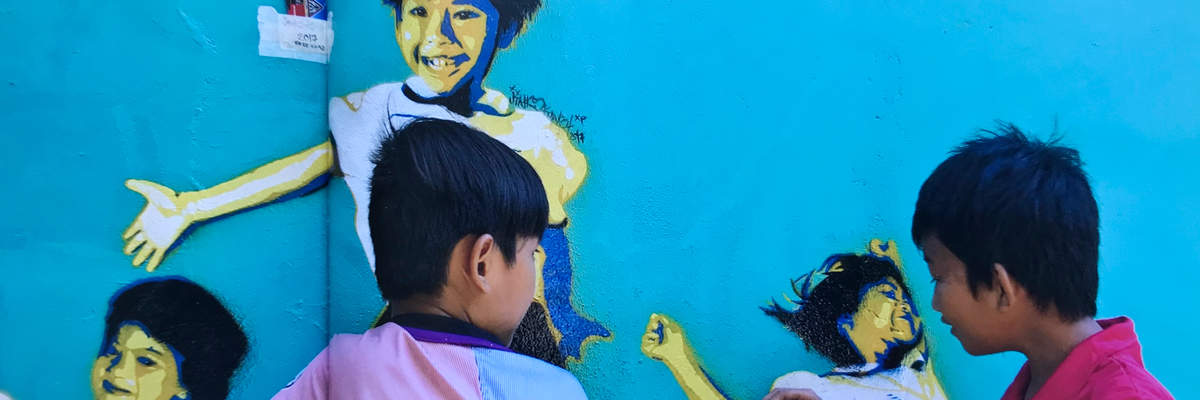Enthusiastic authors like Serge Louis can make Street Art sing, even in print. His new “
The 17
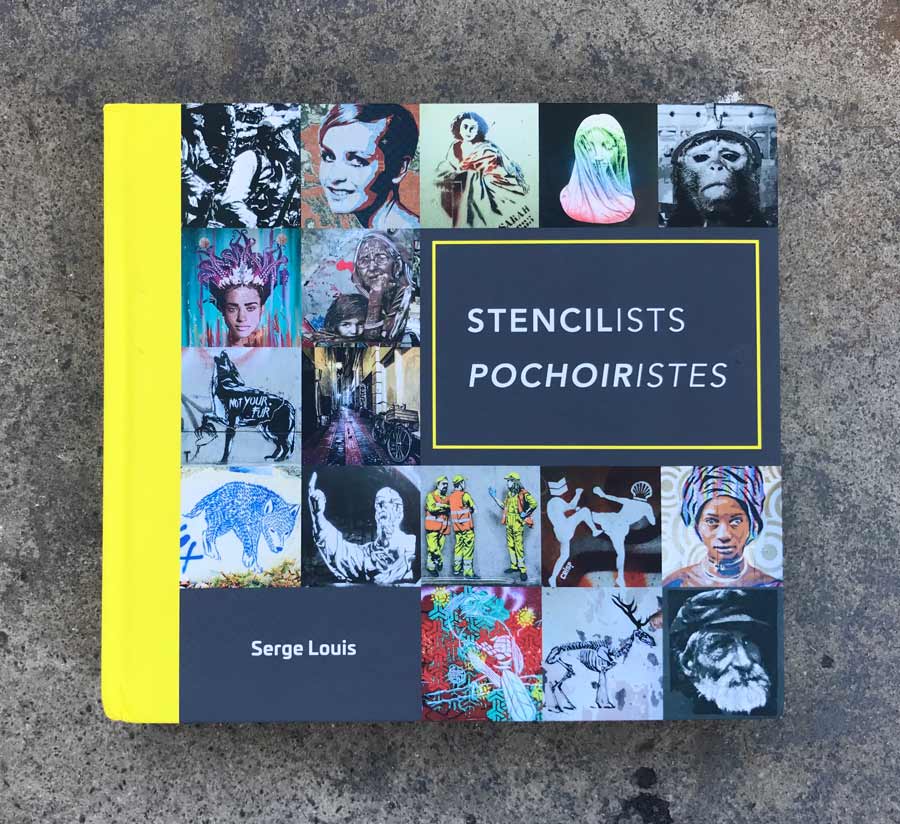
In the intro from Samantha Longhi, who wrote a weekly stencil column here at BSA years ago – in addition to being a gallerist and former editor of Graffiti Art magazine – you get the sweetest memory of a Miss Tic stencil being buffed in her neighborhood, and a sense for how it rocked her world.
“I had truly lost it that day. I felt that this ‘Birth of Venus’ that was re-interpreted by the Parisian stencil artist literally belonged to me,” she says. “It was the stencil I looked at every day, morning and evening, and I had made it mine. It was the beginning of everything for me.”
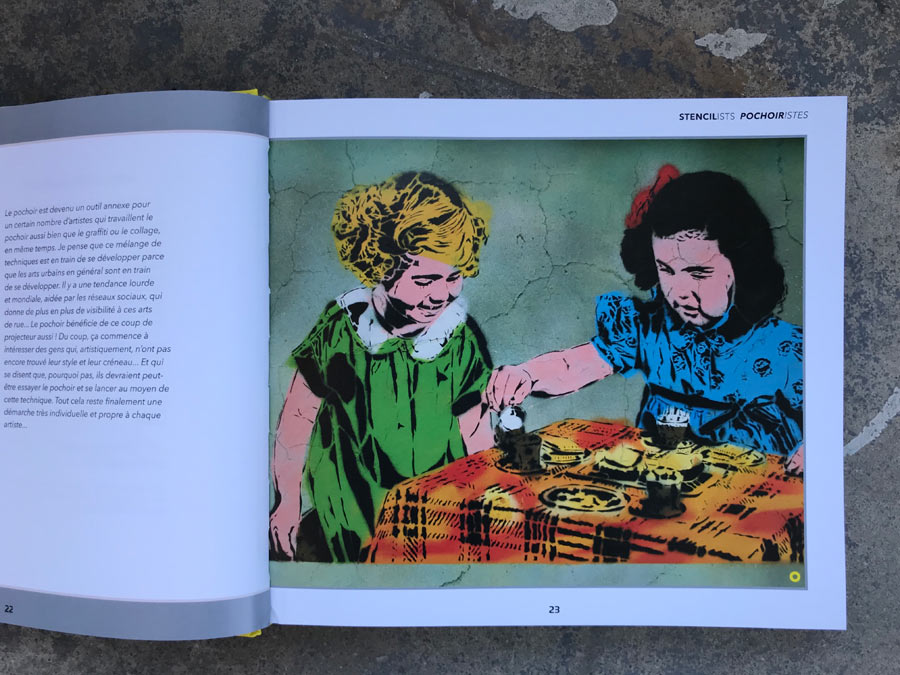
You can tell that this is the same level of appreciation that Mr. Louis invests in his book, with ample space given to the artists to express their specific approach to the lunacy of art on the streets.
“The first trigger was living with two graffiti artists when I was a student,” recalls
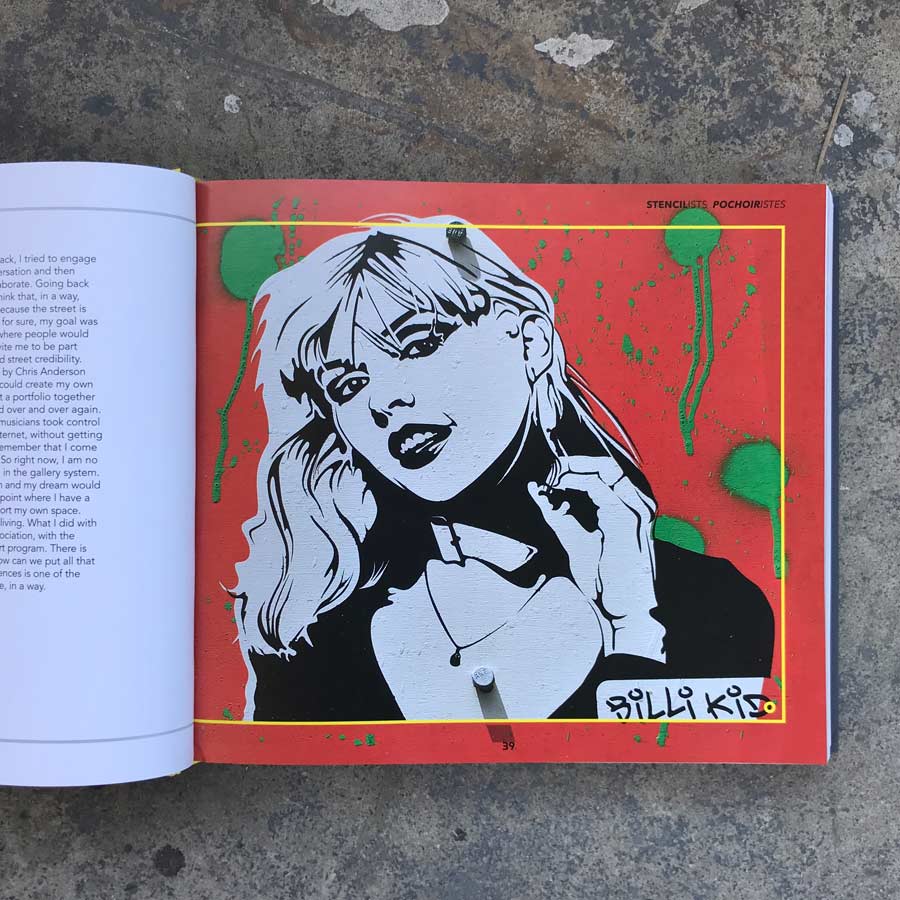
Speaking of the famous Bristol-born stencil artist, there are a couple of topics that recur throughout these interviews; most of these 2nd/3rd generation practitioners point to their pioneers like Blek Le Rat, Banksy, Mis Tic, Jef Aerosol, Ernest Pignon-Ernest, and C215 for setting the standard. The second topic that comes up frequently is that cutting stencils is a time-consuming practice and it is far more involved than most people appreciate.
The photorealist Niz talks about her work in a way that many artists can appreciate. “If you were working with a regular job, if you work an eight hour day, you come home and all your creative energy has been used for something else. Because actually, you need to have time and energy to think about your stencil. You need to execute it. You need to look for materials and do all that stuff. So, unless you are rich and wealthy and you can afford a lot of free time that is disposable, it is challenging doing stencils!”
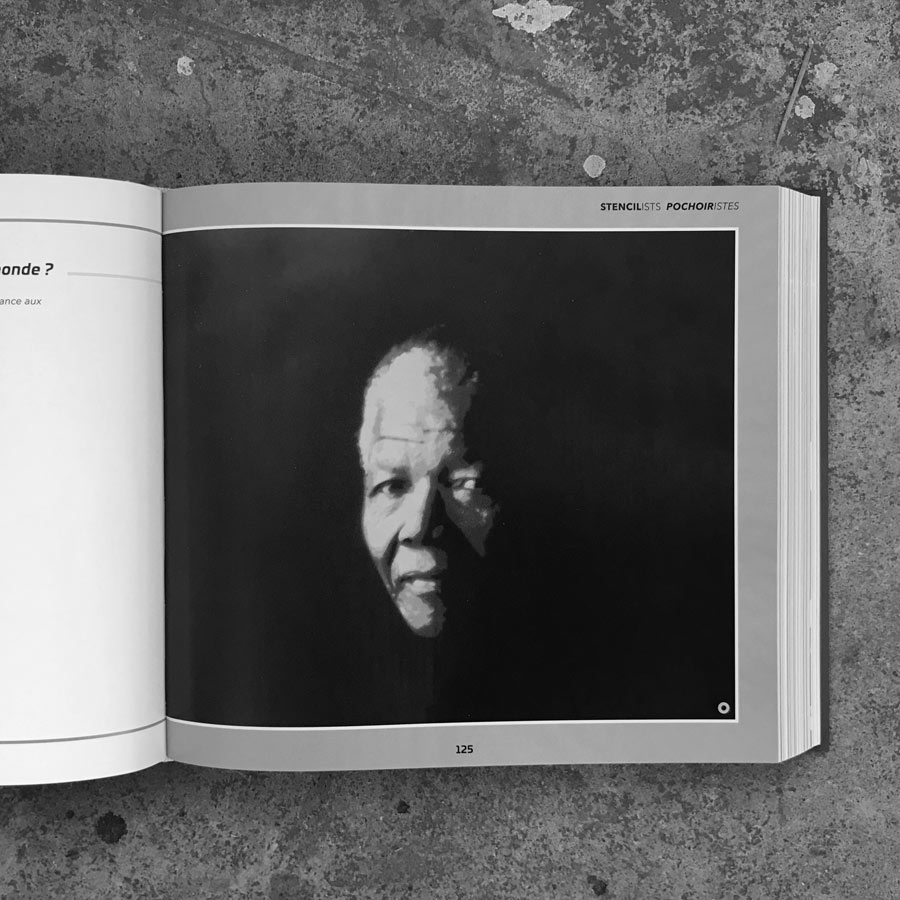
” …you have to carry this wet and sticky template around with you, which adds some serious complications to
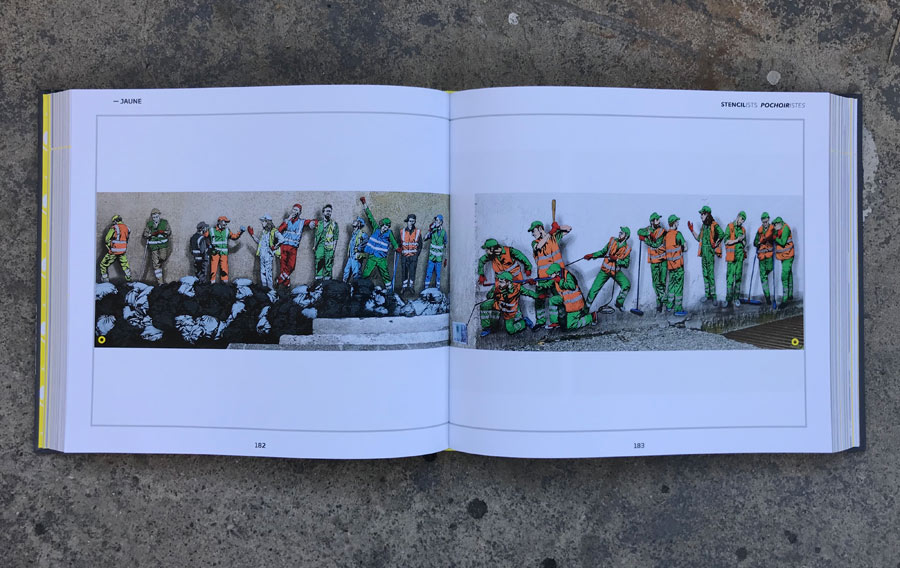
From painterly and multi-layered, to the simplicity of symbols, in the vernacular of advertising, or with a knowledge of art history, the collection represents a good cross section despite the limited size of the list. In his essay, the author is an idealist, and a philosopher – revealing his engagement to be as civic as it is poetic.
“Stencillists are first and foremost profoundly human. And radically humanistic,” he writes.
“They release citizens to express themselves… their criticism of the world is essential and vital for us. They take risks. They raise awareness. Stencil artists radically change how we look at things, as a passerby or as a resident, making us more attentive and more alert to the urban condition..”
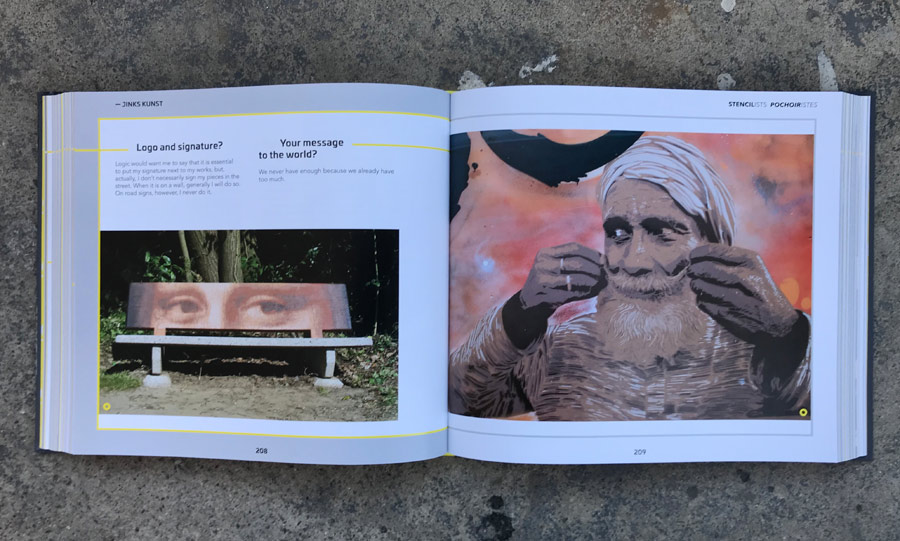
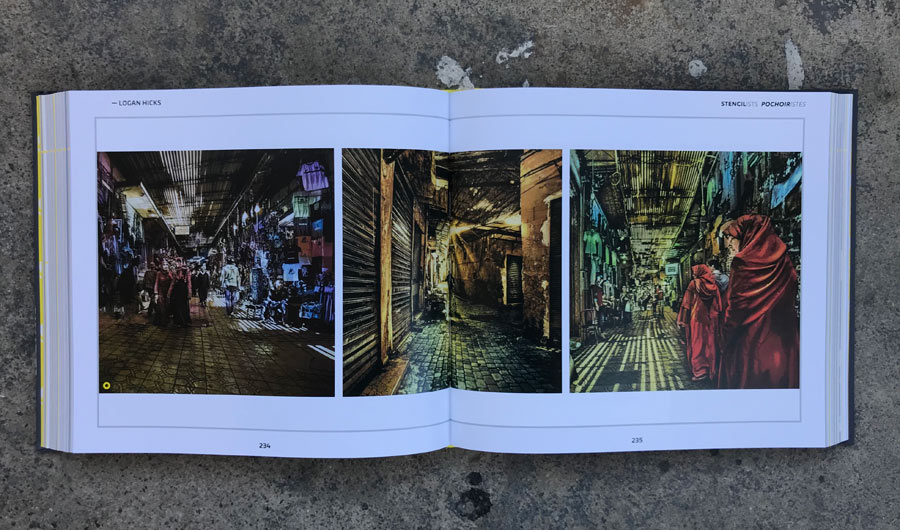
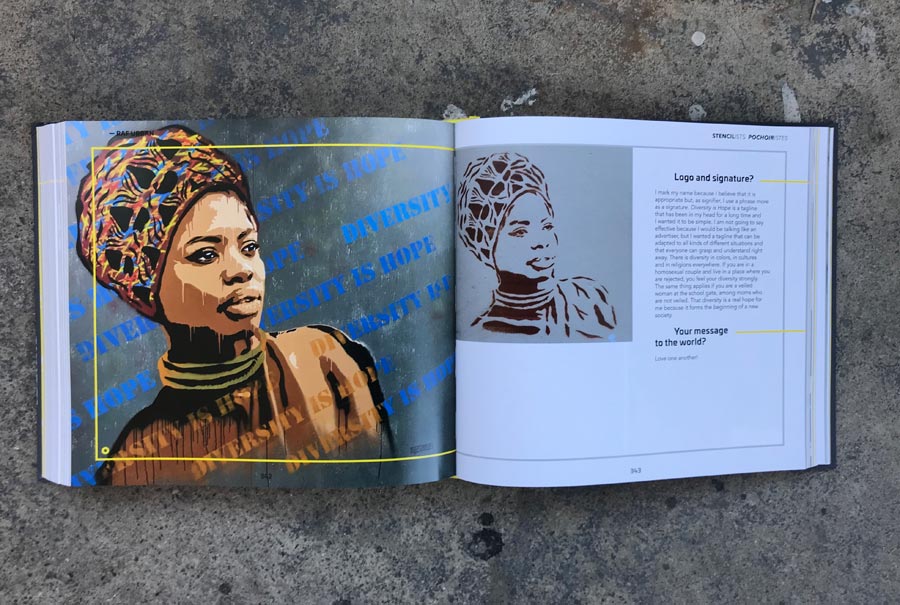
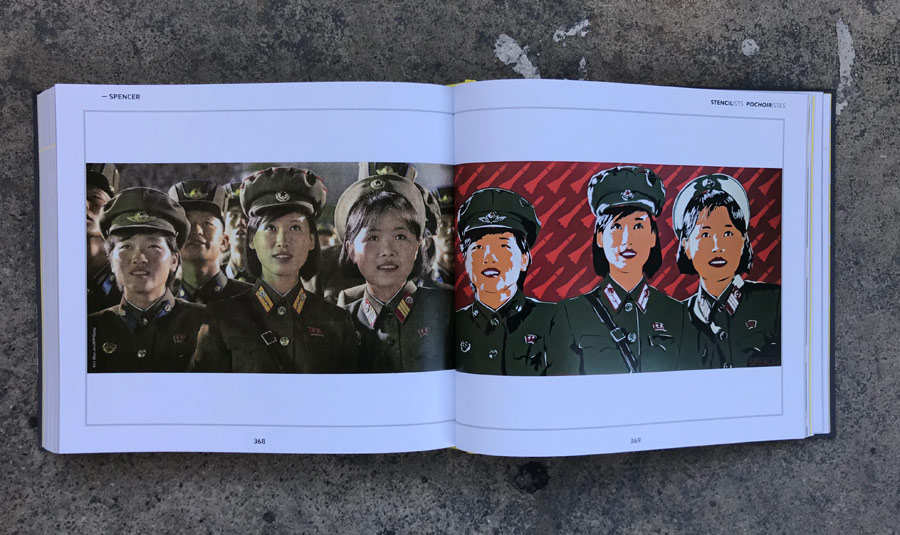
Maedia Publishing will host a book signing on June 1st at 212 Arts Gallery in Manhattan. Click HERE for all the details.
 BROOKLYN STREET ART LOVES YOU MORE EVERY DAY
BROOKLYN STREET ART LOVES YOU MORE EVERY DAY